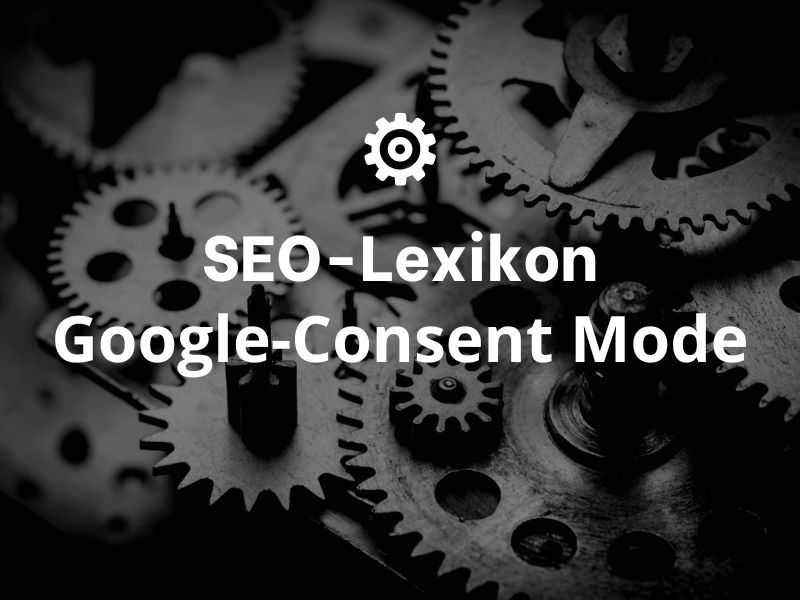The Google Consent Mode is a new optional feature to manage your visitors' consent settings when interacting with Google properties like Google Analytics and Google Ads. Google introduced this feature to allow websites to collect anonymized metrics while also taking user preferences into account.
Data protection regulations such as the General Data Protection Regulation (GDPR) require websites to Cookies Manage in accordance with user consent. Cookie banners and other consent management tools help websites comply with privacy regulations, but they can have unintended consequences.
When users consent to the use of analytics, advertising, or other Cookies decline, they may be deprived of useful data about the operation of the website. Google's Consent Mode is a way for website owners to comply with privacy laws while gaining valuable metrics and insights into their business.
How does the Google Content Mode work?
The Google Consent Mode führt zwei neue Tag-Einstellungen ein – ad_storage und analytics_storage – die das Verhalten auf der Grundlage der gespeicherten Cookie-Einstellungen der Nutzer/innen ändern. Diese Einstellungen werden in der Regel über eine Zustimmungsmanagementlösung wie Termly festgelegt. Wenn du die Tag-Einstellungen änderst, werden die Google-Werbe- und Analyseskripte dynamisch angepasst, damit sie den Einwilligungseinstellungen der Besucher/innen und den internationalen Datenschutzbestimmungen entsprechen.
When a user uses advertising and analyticCookies accepted, the Google advertising and analytics scripts will work normally.
If a user refuses the use of advertising or analyticCookies off, the two new tag settings allow Google to collect non-identifying information. This non-identifying information can be used to measure conversions or other visitor information.
If, for example, a user refuses to use advertisingCookies the Consent Mode ensures that no new advertisingCookies be set, existing advertisingCookies not be read and IP addresses are not logged. Google nevertheless collects ad click information and other anonymized data. Consent Mode can also be used to black out advertising data and further anonymize user data.
Consent Mode is only applicable to Google scripts. It does not change the behavior of other third-party analytics or advertising scripts.
Why use Google Content Mode?
The Google Consent Mode allows your website to collect useful data that may not otherwise be collected. Anonymized data points may be collected when users Cookies disagree - that could be a large portion of your website visitors. This information can help websites better understand the effectiveness of advertising, visitor metrics, and more.
Without Consent Mode, Google's services will not be available to users who use advertising or analytics services.Cookies reject, not loaded at all, losing important information about the functioning and performance of your website.
Consent Mode also enables websites to more easily comply with user consent. Once Consent Mode is implemented, Google's advertising and analytics scripts are automatically adjusted to match users' stored consent settings. No additional effort is required from the website operator.
How does Google Content Mode work with Termly?
The Google Consent Mode Requires the use of a consent management system. If you haven't implemented a consent solution yet, you can use Termly's Consent Manager, which is also compliant with GDPR, CCPA, and other privacy regulations.
Your website visitors can save their consent settings using the Termly consent banner, and the Google Consent Mode will work with these saved settings. You can implement Consent Mode directly on the page by customizing your tracking scripts or via Google Tag Manager.
The consent solution from Termly works with or without Google Consent Mode.
What else should I be aware of when using Google Consent Mode?
If you want to use the Google Consent Mode you're relying on Google to follow the right practices when it comes to your customers' privacy.
When you use Consent Mode, you don't disable Google scripts based on your visitors' preferences. Instead, you run the scripts and tell Google about your visitors' preferences. This tells Google to adjust the tracking so that it complies with international regulations.
As a general rule of thumb, before you share customer data with a third party, always make sure you know how the third party will handle that data. You can read more about the Google Consent Mode and read its behavior in the Google documentation or privacy policy.
« Back to Glossary Index


